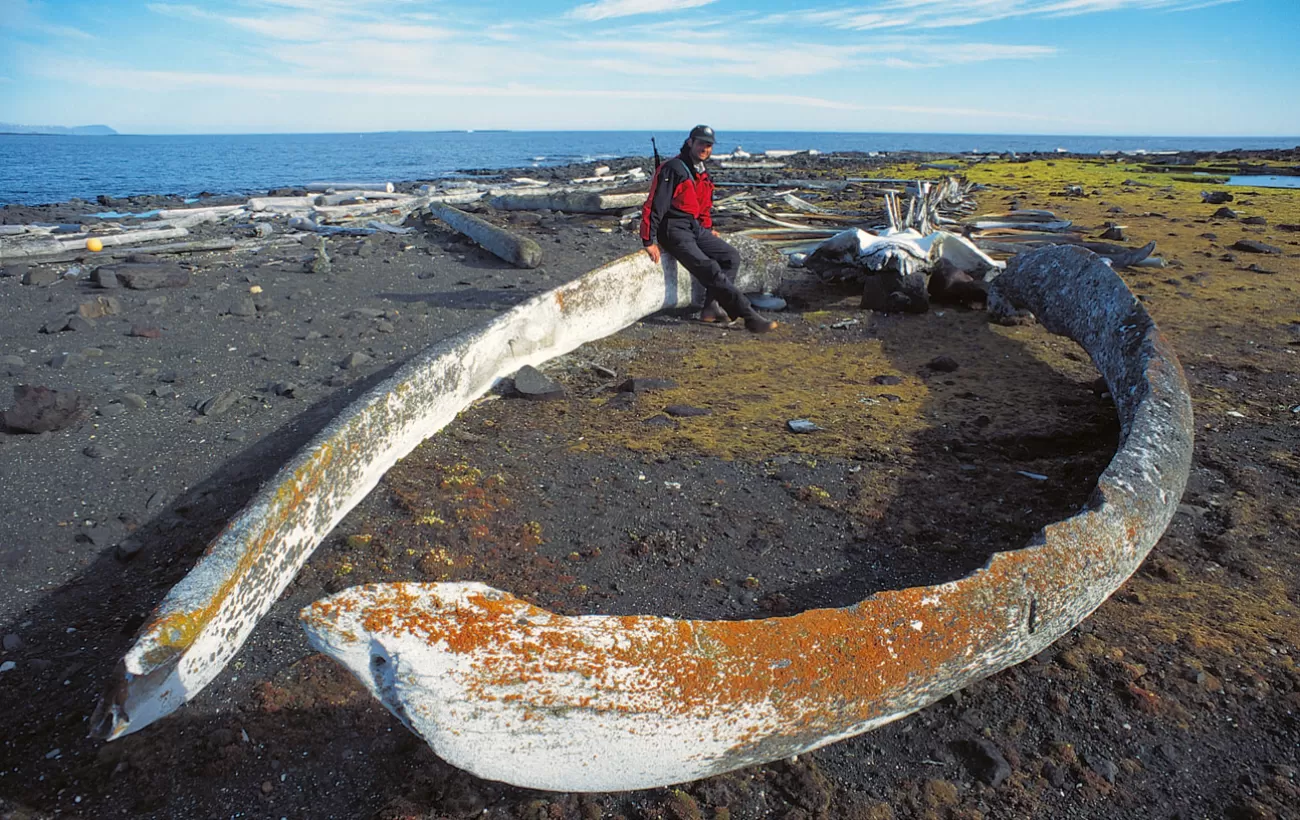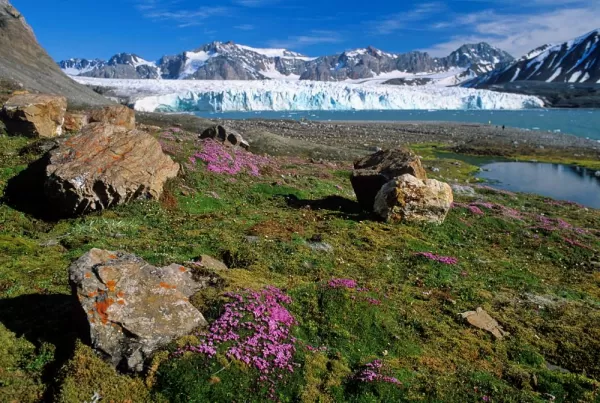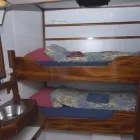Today sail either to Sorgfjord, where you have a good chance of seeing walruses, or to Murchison Bay, on the north side of which there is an extensive dry tundra, home to many reindeer. There is also a Swedish research station here. As you continue through Hinlopen Strait you are surrounded by icecaps. Land in Lomfjord, a beautiful fjord surrounded by high mountains. Augustabukta is a lovely bay close to a glacier which is crevasse-free, allowing you to walk without difficulties. On a nearby cliff the rare and beautiful ivory gull nests, together with black guillemots. Reindeer, polar bears and walruses are usually seen in this area.
Next sail towards the impressive Brasvell Glacier. Take an excursion on Svartknausflya, a desolate polar desert almost devoid of vegetation, or visit Wilhelmøya, which has raised beaches littered with sub-fossilized whale skeletons, and where encounters with polar bears are likely. Sailing through the narrow Heleysundet between Spitsbergen and Barentsøya can only be done against the current, a very spectacular journey.
As an alternative, if conditions do not favor sail through Freemansundet. At Kapp Lee, walk in beautiful Rosenbergdalen to see reindeer. For walkers it is great hike from here to Diskobukta. In Diskobukta visit a large colony of kittiwakes which nest in a canyon. Arctic foxes and polar bears with young often roam through the canyon, scavenging on young, flightless birds which fall from the ledges. On the raised beaches there are many sub-fossilized whale skeletons.
Kong Ludvigøyane is a breeding place for walruses. On the islands there are also many remains of the whaling, walrus, and polar bear hunting periods. Close encounters with polar bears are virtually guaranteed here. Continuing your exploration of southern Spitsbergen, sail into the labyrinth of side fjords in Hornsund. Behind Brepollen, a large glacial deposit at the head of the fjord, sail along a beautiful glacier front with good chances of seeing bearded seals and polar bears.
The geological formations in this area are very spectacular and colorful. Pay a visit to the Polish research station at Isbjørnhamna, where the friendly crew discusses their scientific programs.
On your way to Longyearbyen sail into Bell Sund to reach Ahlstrandhalvøya, with its interesting geological formations and the remains of the 20th century beluga hunting. It is still a good area for observing belugas. If time allows pay a visit to Barentsburg, the only inhabited Russian settlement in Spitsbergen, or to Colesbukta, an abandoned Russian coal mining settlement.
















